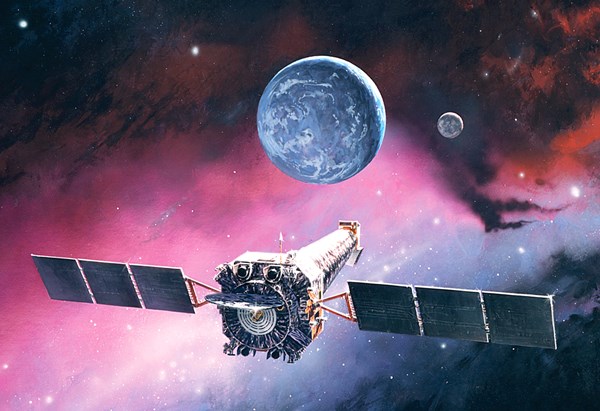REDONDO BEACH, Calif., Feb. 22, 2007 (PRIME NEWSWIRE) -- More than seven years after its launch and more than two years past design life, NASA's Northrop Grumman (NYSE:NOC)-built Chandra X-ray Observatory continues to produce data that enables astronomers to make extraordinary discoveries.
A photo accompanying this release is available at: http://media.primezone.com/noc/
Astronomers made headlines earlier this year when they announced that Chandra found evidence for a significant new class of supernova and also uncovered evidence of a powerful outburst from the giant black hole at the Milky Way's center.
Among its most extraordinary discoveries, Chandra provided data that enabled astronomers to independently confirm that the universe is dominated by dark energy - the enigmatic repulsive force that is causing the universe's expansion to accelerate. Although roughly 70 percent or more of the universe consists of dark energy, astronomers still have many more questions than answers about this mysterious force.
"With many discoveries, including that of dark energy, Chandra has far exceeded our expectations for on-orbit performance and for the science it has delivered," said Alexis Livanos, president of Northrop Grumman's Space Technology sector. "It has pushed technological and scientific boundaries, providing knowledge that's being applied to new space observatories and opening up new areas of inquiry for astronomers."
Northrop Grumman served as prime contractor for NASA Marshall Space Flight Center, building and integrating the structurally advanced observatory at its Space Park manufacturing facility. The company's team developed innovative development and testing approaches that are enabling the construction of new missions, such as the James Webb Space Telescope.
These include precision alignment of large mirrors; precision integration and test techniques; and techniques for precision structural stability. Extensive testing and pathfinder, or engineering models, were used to validate the design and reduce the risk of building this complex satellite.
Launched in 1999 from the Space Shuttle, Chandra has produced more than 6,800 observations and more than 42,000 hours of on-target science observing time.
It has also produced notable awards on Earth. In 2003, Northrop Grumman, scientists from the Smithsonian Astrophysical Observatory and Massachusetts Institute of Technology were given a NASA Public Service Group Achievement Award for their work on the Chandra X-ray Observatory Mission Planning and Review Team.
Northrop Grumman Corporation is a $30 billion global defense and technology company whose 120,000 employees provide innovative systems, products, and solutions in information and services, electronics, aerospace and shipbuilding to government and commercial customers worldwide.
